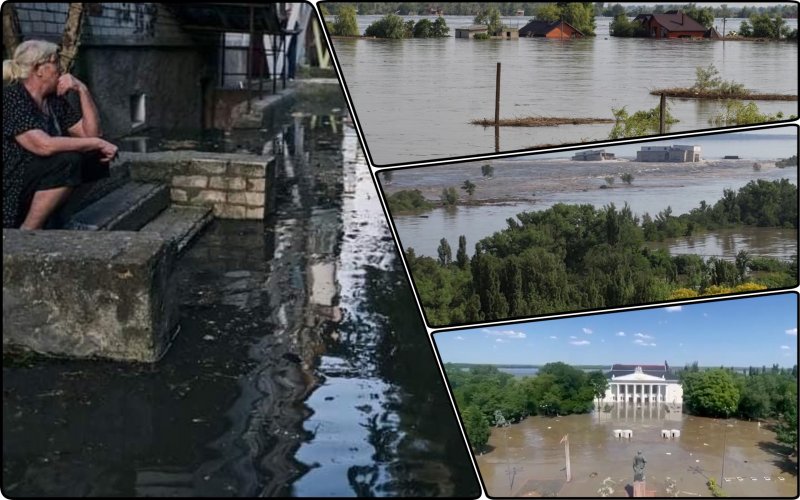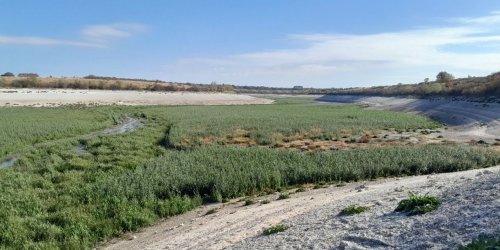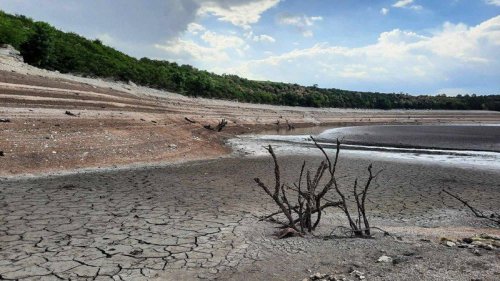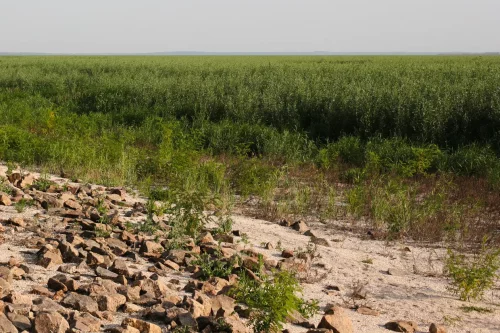Evacuation of dozens of settlements, destroyed houses and industry, flooded city streets and fields, animals that cannot get out of the water trap. All this, the consequences of the Russian occupiers' large-scale detonation of the Kakhovskaya HPP dam, which took place on the night of June 6. According to experts, all we see now is the tip of the iceberg. The key consequences for the environment will come later, when the "big water" recedes. Some experts are convinced that life in the southern and partly central parts of Ukraine will change completely from now on. The destruction of the Kakhovskaya HPP is already being called the greatest possible man-made disaster of the 21st century. EcoPolitics found out why.
"This is a disaster in every sense. It is simply impossible to understand and comprehend its damage. We predicted various scenarios, but let's be honest, all colleagues thought that they could blow up a maximum of 1-2 shutters and it would be possible to compensate for it through thresholds. They blew up completely HPP! There is no engine room, consoles of hydraulic structures! No one simulated such a scenario, because it was nonsense. It simply would not have occurred to them!" – Maksym Soroka, head of the ecomonitoring committee of the Association of Environmental Professionals PAEW does not hold back his emotions when talking about the undermining of the Kakhovskaya HPP dam. It is currently impossible to assess the consequences of the disaster, because the water is still coming. In addition, access to a large part of the affected territory is impossible due to the occupation.
In general, the destruction of the dam has a large-scale and comprehensive impact on all natural systems and all life in the south of Ukraine. As noted President of the Association of Environmental Professionals PAEW and Director of the Office of Sustainable Solutions Lyudmila Tsyganok , by all indications, the undermining of the Kakhovskaya HPP by the Russians can be qualified as ECOCIDE.
Humanitarian crisis
The first consequence of undermining the dam is a humanitarian crisis. According to Lyudmila Tsyganok, the release of almost 18 cubic kilometers of water from the reservoir will flood more than 3,000 square kilometers of land. Hundreds of thousands of displaced citizens whose homes were destroyed or damaged by water are waiting for Ukraine in the coming days. In the future, up to one and a half million climate refugees may also appear.
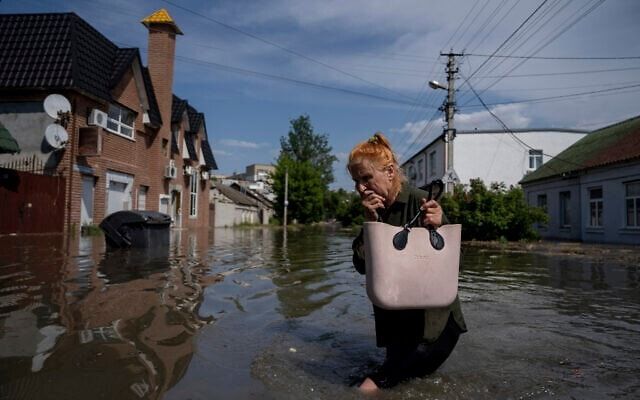
Thanks to the dam of the Kakhovskaya HPP, centralized water supply was ensured for many cities in the southern and central parts of Ukraine. Now all of them are left without adequate water supply for an unknown period.
"Currently, a large number of cities are switching to decentralized water supply mode in emergency conditions. In addition, Crimea, Kryvyi Rih and other cities of Ukraine remained without water supply from the Dnieper for years. Mykolaiv will again be without water, flooding of the Namyv microdistrict is possible," Lyudmila Tsyganok notes.
"Ukrhydroenergo" has already announced that the Kherson region will suffer the most from the lack of water.
Since yesterday, the water level in the North Crimean Canal has also started to drop.
Water pollution
Already in the first half of the day on June 6, the President's Office reported that as a result of the explosion of the Kakhovskaya HPP, 150 tons of lubricant entered the Dnipro River and there is a risk of further leakage. So far, it was only about the materials that were directly at the HPP. And this is a tiny fraction of pollutants that the water will take with it.
"Now, cesspools, septic tanks, sewage treatment plants, various purification systems, and technological facilities are being flooded. Let's not forget that there were a huge number of warehouses in this area, including those with chemicals. This is an agricultural region, I remind you. And what will be the consequences of flooding all of this – no one can say," says Maksym Soroka.
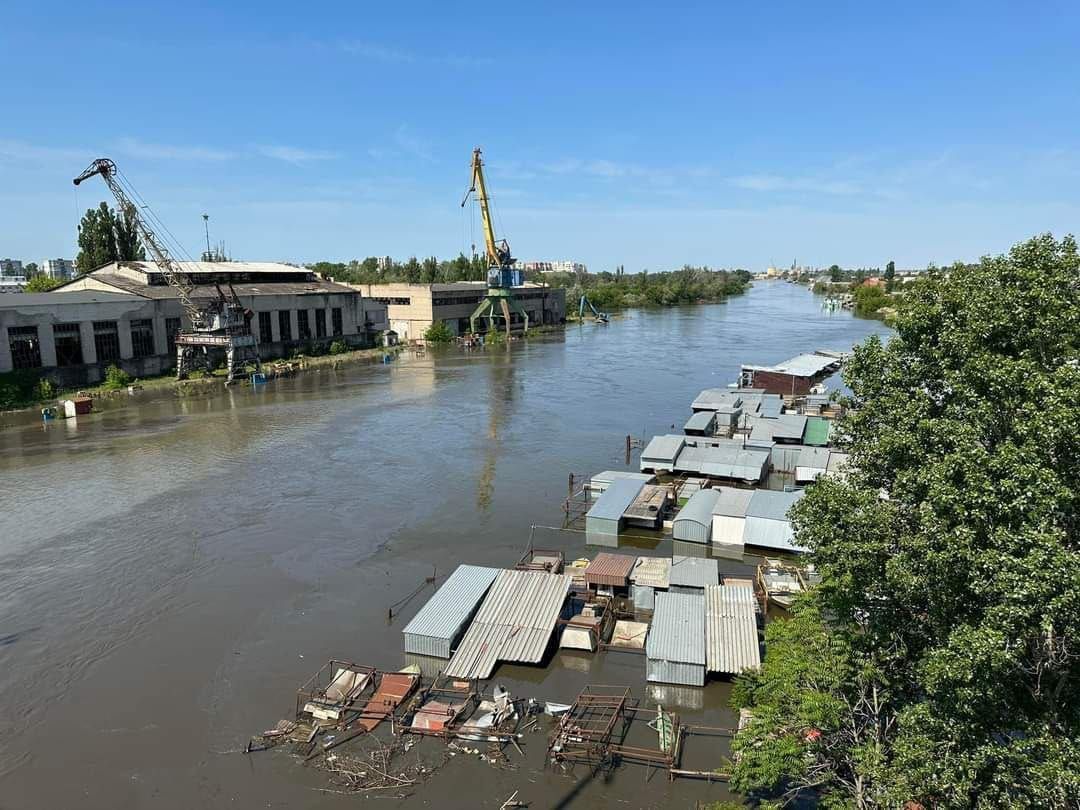
In turn, the Ministry of Health told the mass media that there could also be many substances dangerous to health at the bottom of the Kakhovskaya HPP.
All of this has now ended up in open water bodies and wells in the flooded area, and in some time the pollution may spread to water resources in areas close to the flooded areas.
In addition, a large number of unexploded mines also got into the water, which will continue to be washed ashore down the Dnieper, as well as on the shores of the Black Sea.
Destruction of plants and animals
Unfortunately, the nature of this region was significantly affected by active hostilities even before the breakthrough of the Kakhovskaya HPP. Now whole ecosystems in flooded areas will be destroyed by water. Dozens of waterfowl and near-water birds have already lost wetlands.
Large animals can often escape from flooding on their own, but not all. Already in the first hours after the disaster, the zoo "Kazkova Dibrova" in Nova Kakhovka was flooded. According to activists, only swans and ducks could escape from the zoo. Pets and domestic animals, whose owners did not manage to save them, are also currently under threat.

Animals killed by flooding are also a problem for the environment.
In addition, serious contamination of water bodies in the region with dangerous substances (which we wrote about above) will destroy part of the aquatic inhabitants of this part of the Dnipro and nearby areas of the Black Sea. And it will also put on the edge of survival those terrestrial animals that manage to escape from the "big water".
The situation with protected areas is still ambiguous. As for the Kinburn Spit, according to official data, it is not yet threatened with complete flooding. Only temporary flooding of the road is possible, due to which the spit from the peninsula will become an island. At the same time, deputy of the Kiev City Council of the VIII convocation, Konstantin Yalovoy, who deals with environmental issues, notes: "The existence of the national parks Nizhnedneprovsky, Veliky Lug, Kamenskaya Sich is under threat. The situation with the first is especially difficult. Its restoration is a big question. And this is more than 80 thousand hectares with rare species of biodiversity”.
Steppe or desert?
The currently flooded territory of the Kherson region will not remain so forever. As Ukrhydroenergo predicts, in 4-5 days the water will begin to recede, and in 10 it will completely flow into the Black Sea.
It is likely that in the end we will have new wetlands near the Dnipro, but no one has yet predicted how much area they will occupy.
A more interesting question: what will happen to the territory of the former so-called Kakhovsky Sea? Fertile meadows were flooded during the construction of the reservoir. Can we get them back?
On this issue, the opinions of ecologists differ radically.
Maxim Soroka is sure that the open sandy bottom will become a new desert. This will cause dust storms, rise in temperatures in the region and establish an even drier climate in the southern part of Ukraine than it is now.
Emergence of climate refugees
Successful agriculture in the south of Ukraine was possible to a greater extent thanks to the established system of field irrigation. Water for irrigation was obtained from the reservoir, which has now become impossible. As a result, agriculture in the region as we know it will no longer exist. Such a situation will probably cover the territories of Mykolaiv Oblast, Kherson Oblast, Azov Region, and will also affect Dnipropetrovsk Oblast and Kirovohrad Oblast.
Without water, the work of large industrial enterprises in the region will also be impossible. For example, the ArcelorMittal Kryvyi Rih mining and metallurgical plant is already sending part of its staff to remote work due to the termination of water supply to some units. Individual enterprises in general run the risk of stopping completely.
The destruction of agriculture and industry in the region can cause an influx of climate refugees, people who have lost their homes and livelihoods due to climate change.
"Now it will be a completely depressed region. Without water. And Crimea will be without water. People need to eat and work. Therefore, in such cases, they start moving," Maxim Soroka concludes.
Environmentalists also express concern about the situation with the Zaporizhzhia nuclear power plant. However, the president of "Energoatom" Petro Kotin assures that the decrease in the water level in the Kakhov reservoir does NOT directly affect the water level in the cooling pond of the ZNPP.
According to the general director of "Ukrhydroenergo" Ihor Syrota, the Kakhovskaya HPP is planned to be rebuilt in the same place after the deoccupation of the Kherson region. According to him, it will take about 5 years to rebuild. But unfortunately, the destruction of hydroelectric power plants has already started irreversible processes of climate change in the region, and it will be difficult to reverse them.
EcoPolitic will monitor the consequences of the explosion of the Kakhovskaya HPP and will inform its readers about the consequences of the disaster and how to overcome them.

